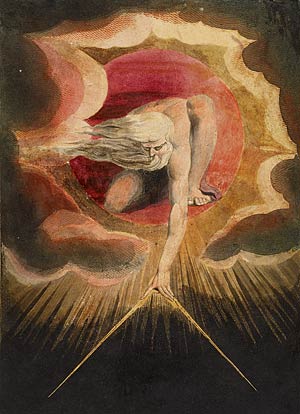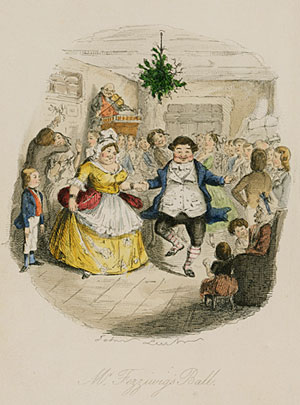
William Blake, “Mysterious Dream,” watercolor over traces of black chalk
Morgan Library & Museum
225 Madison Ave. at 36th St.
Closed Monday
Admission: $12 adults, $8 children under sixteen (free Fridays 7:00 – 9:00)
212-685-0008
www.themorgan.org
While they’re not exactly the Rat Pack and didn’t exactly hang out together – although there is some overlap of when they existed here on earth – William Blake (1757-1827), Jane Austen (1775-1817), Charles Dickens (1812-70), and Giacomo Puccini (1858-1924) make for quite a foursome at the Morgan Library this holiday season. A master engraver, painter, Romantic poet, and religious nut, Blake was a visionary artist who claimed that some of his work came from, well, otherworldly visions. “William Blake’s World: ‘A New Heaven Is Begun’” (through January 3) includes such awe-inspiring pieces as “Satan,” “Chaucer’s Canterbury Pilgrims,” the gorgeous watercolor series he did illustrating the Book of Job (even throwing in Jesus for good measure), the wacky “First Book of Urizen,” a letter from Blake to one of his patrons, a pair of plates of his most famous poem, “The Tyger,” and his anti-New World screed, “America: A Prophecy.” Blake, who died poor and was buried in an unmarked grave, had remarkable skill and a mind that just did not quite fit in his time.
The Morgan takes a revealing look at one of England’s greatest novelists in “A Woman’s Wit: Jane Austen’s Life and Legacy” (through March 14), comprising original manuscripts, letters, and illustrated editions as well as Blake’s portrait of Harriet Quentin, which Austen saw in London. Austen, who published anonymously because of her gender, penned such classic books as PRIDE AND PREJUDICE, MANSFIELD PARK, EMMA, and SENSE AND SENSIBILITY, all dealt with in this exhibition. Her writings are placed in context alongside satiric cartoons by James Gillray and diary entries and a documentary film in which other authors discuss Austen’s lasting influence. The letter from her sister Cassandra announcing Jane’s death is simply heartbreaking.

John Leech, detail, “Mr. Fezziwig’s Ball,” original watercolor illustration for Charles Dickens’s CHRISTMAS CAROL, first edition, 1843
Running through January 10 in the McKim Building, “Charles Dickens’s A CHRISTMAS CAROL” features Dickens’s original marked-up manuscript of the holiday tale, written in six weeks in 1843 and bound in red leather shortly after its publication. The book is in the McKim Building, which will be open to the public for free on Tuesdays from 3:00 to 5:00, Fridays (except Christmas and New Year’s Day) from 7:00 to 9:00 (when the entire museum is free), and Sundays from 4:00 to 6:00. Finally, the Morgan is displaying more than three dozen items that look into the life and legacy of Italian composer Giacomo Puccini in “Celebrating Puccini” (through January 10), including letters, posters, and original manuscripts for LA BOHÈME and MADAMA BUTTERFLY.